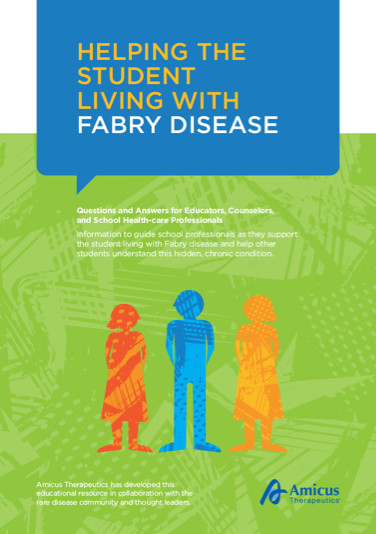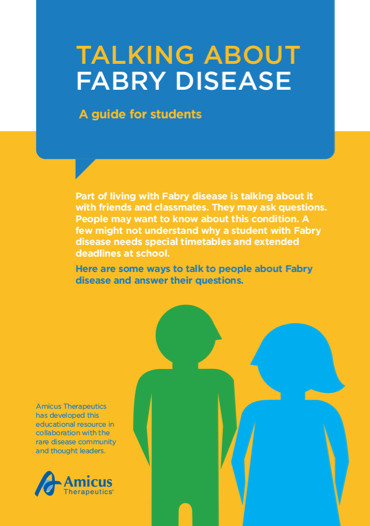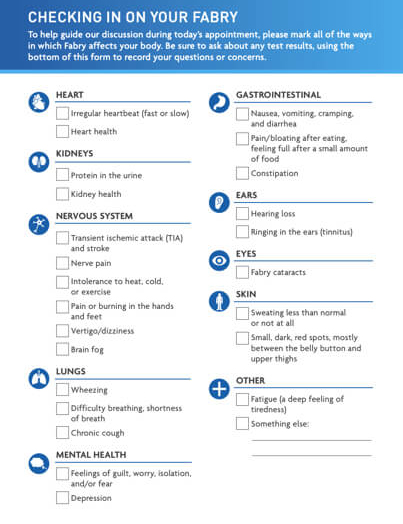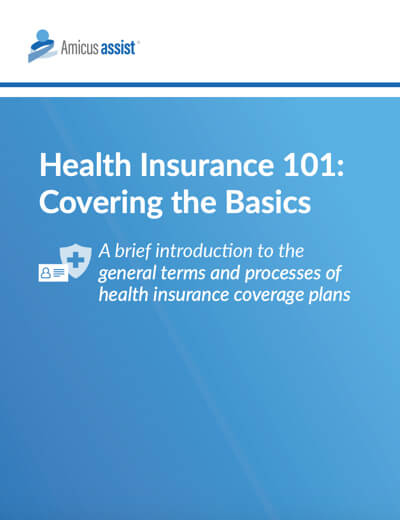

Reminder — Don’t be afraid to speak up
With a rare disease like Fabry, people won’t necessarily understand what you’re going through until you tell them. You may need to personalize how you communicate your needs based on who you’re talking with (healthcare providers, coworkers, friends, etc).
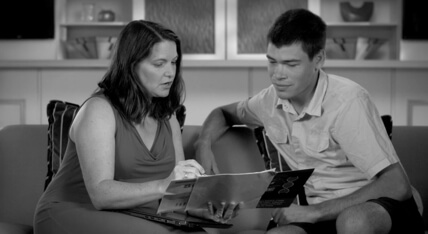
Advocate for yourself in multiple situations
Courtnay
Take note — Kids may need a little extra help
Growing up is hard enough. It can be even harder when you have a rare disease. So, to help kids and young people manage it all, talk to the key people in their support circles. Having an involved support system can make a big difference.
Don’t forget — Fabry is different for everyone
No two people experience Fabry disease the same way. That’s why it is up to you to make note of the Fabry effects you feel and keep your care team in the loop about what’s going on. The only person who can explain what you’re going through is you.
Scroll through specialized resources on some of the different effects of Fabry disease:
Keep in mind — Fabry can be invisible
While you may experience pain (burning, stabbing, tingling), the pain you’re in isn’t always outwardly obvious to others. And trying to explain your pain to the people in your life can be difficult. Below are some statistics on pain in Fabry. Each is paired with an explanation to help you better describe what you may be experiencing the next time it occurs.
 47
%
47
%
Experience pain attacks
Sudden, intense pain that does not last very long.
 66
%
66
%
Experience triggered pain
Pain that is triggered by something that wouldn’t usually cause pain, such as hot water or even a light touch.
 17
%
17
%
Experience pain crises
Intense pain that lasts hours or even days.
 17
%
17
%
Experience chronic pain
Pain that is always present.
Stay alert — Watch out for different triggers
Some things can make your Fabry pain worse. Everyone is different, so take note if one of these triggers you more than others. Be sure to tell your healthcare provider if any of the following seem to affect you.

Being sick with the flu, or with other acute or viral illnesses

Feeling stressed

Exercise

Fatigue

Rapidly changing or extreme temperatures

Certain foods
Get ready — Prepare for doctor appointments
Knowing more about Fabry can help you explain your unique experience with it. You can do a few things to be more prepared for your next appointment with a healthcare provider:
- Watch a variety of videos
- Read up on the latest information
- Use tools to organize your thoughts
- Familiarize yourself with the basics of health insurance for conversations with office staff about coverage, billing, etc

Join the Community
Get the latest information about Fabry disease.
Get Updates

